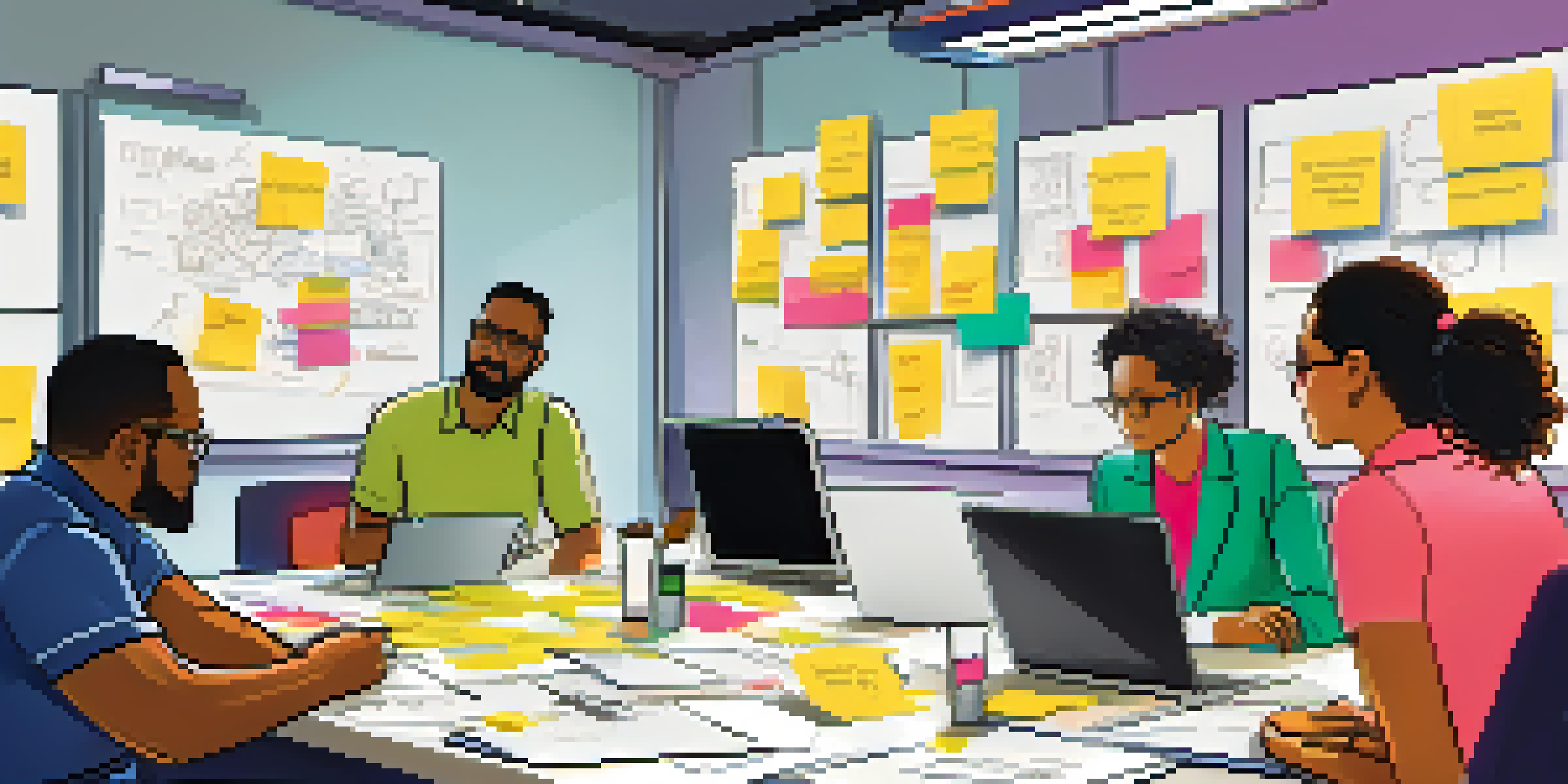Product Development Teams: Roles and Responsibilities Explained

The Importance of Product Development Teams in Business
Product development teams play a crucial role in bringing ideas to life. They are the driving force behind transforming concepts into tangible products that meet market needs. Without these teams, businesses would struggle to innovate and stay competitive.
The best way to predict the future is to create it.
These teams not only focus on the product itself but also ensure that it aligns with the company’s vision and customer expectations. By collaborating across various functions, they help bridge the gap between technical feasibility and market demand.
Ultimately, the effectiveness of product development teams can significantly impact a company’s success. Their ability to adapt and respond to changes in the market can be the difference between a thriving product and a missed opportunity.
Key Roles in Product Development Teams
Within product development teams, several key roles contribute to the overall process. These include product managers, designers, engineers, and marketers, each bringing unique skills to the table. Together, they create a well-rounded team capable of tackling various challenges.

The product manager often takes on the role of the visionary, guiding the team by defining the product's goals and roadmap. Meanwhile, designers focus on user experience, ensuring that the product is not only functional but also enjoyable to use.
Collaboration Fuels Product Success
Effective teamwork among product managers, designers, engineers, and marketers is essential for creating innovative and successful products.
Engineers bring these ideas to life through technical expertise, while marketers ensure that the product effectively reaches and resonates with its target audience. This collaborative effort is essential for successful product development.
Product Manager: The Visionary Leader
The product manager is often seen as the glue that holds the team together, acting as a bridge between different departments. They are responsible for setting the product vision, defining success metrics, and prioritizing features based on customer feedback and market trends. A great product manager is not just a planner but also a strategist.
Collaboration allows us to know more than we are capable of knowing by ourselves.
They must communicate effectively with team members and stakeholders, ensuring everyone is aligned with the project goals. This requires a blend of leadership, negotiation, and communication skills to rally the team around a common vision.
Furthermore, the product manager continuously monitors the product's performance post-launch, making necessary adjustments based on user feedback. Their role is dynamic and vital to the product's life cycle.
Designers: Crafting User-Centric Experiences
Designers play a critical role in product development by focusing on creating user-centric experiences. They conduct user research to understand the needs, preferences, and pain points of the target audience. This information guides the design process, ensuring that the product is intuitive and engaging.
By using wireframes, prototypes, and user testing, designers can iterate on their ideas and refine the product before it goes into development. This iterative process helps catch potential issues early, saving time and resources down the line.
Roles Define Team Dynamics
Each member of the product development team, from visionaries to technical experts, plays a critical role in ensuring the product meets market needs.
Ultimately, designers help to translate complex functionalities into a seamless user experience. Their work is crucial in ensuring that users not only adopt the product but also enjoy using it.
Engineers: Turning Ideas into Reality
Engineers are the technical wizards of the product development team, responsible for transforming ideas into functional products. They take the designs and specifications provided by the product manager and designers and build the actual product. This requires a deep understanding of technology and problem-solving skills.
Collaboration among engineers is essential, as they often need to work together to integrate various components of the product. They must also ensure that the product is scalable, reliable, and secure, which adds to the complexity of their role.
Moreover, engineers often engage in testing and quality assurance to identify bugs and improve performance. Their expertise is foundational to the successful launch of any product.
Marketers: Amplifying the Product Message
Marketers play a pivotal role in product development by ensuring that the product reaches its intended audience. They craft compelling narratives around the product, highlighting its value and benefits. This involves conducting market research, developing marketing strategies, and executing campaigns to generate buzz.
Their work begins even before the product launch, as they help shape the messaging and positioning based on user insights and competitive analysis. By understanding customer needs, marketers can effectively communicate why the product is a must-have.
Adaptability is Key for Future Teams
As technology and work dynamics evolve, product development teams must remain flexible and embrace continuous learning to stay competitive.
Post-launch, marketers continue to gather feedback and analyze market performance to refine their strategies. This ongoing effort ensures that the product remains relevant and continues to attract users.
Collaboration: The Heart of Product Development
Effective collaboration is at the heart of successful product development teams. Each role, from product manager to marketer, must work in harmony to achieve the common goal of creating a successful product. This collaboration fosters an environment where ideas can be shared openly and creativity can flourish.
Regular meetings, brainstorming sessions, and collaborative tools can enhance communication and ensure that everyone is on the same page. This is crucial, especially when addressing challenges and making important decisions throughout the development process.

When teams collaborate effectively, they can leverage diverse perspectives and expertise, leading to innovative solutions and a more robust product. This synergy is what ultimately drives success in product development.
The Future of Product Development Teams
As the business landscape continues to evolve, so too will the roles and responsibilities within product development teams. Emerging technologies, such as artificial intelligence and machine learning, will likely shape how products are developed and brought to market. Teams must stay adaptable to these changes to remain competitive.
Additionally, a growing emphasis on remote work and global collaboration is reshaping how teams operate. This shift presents both challenges and opportunities, as team members may be spread across different time zones and cultures.
Ultimately, the future of product development teams lies in their ability to embrace change and foster a culture of continuous learning. By doing so, they can remain agile and responsive in an ever-changing market.